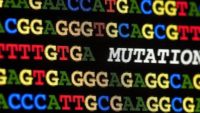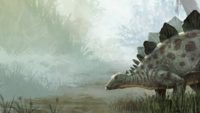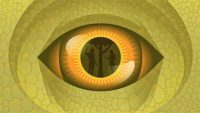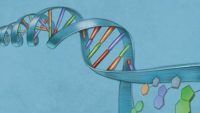With a new addition to the category of “uniquely human features,” MIT neuroscientists discovered a feature of human—not animal—brain cells. Certain human brain cells have much longer extensions called dendrites, and this research team found a uniquely human reason for it. The cerebrum lies just beneath the skull. It has folds and bends. This largest part of the brain manages all kinds … More… …read more Source: icr.org
Since the 1990s, cross-section images of mantle tomography have shown visible slabs of oceanic lithosphere (which includes oceanic crust) descending hundreds of miles beneath ocean trenches into subduction zones.1 These descending plates have been imaged all the way down to the top of the earth’s outer core2 and are composed of cold, brittle, dense rock about 62 miles thick. Researchers from the Univ… More… …read more Source: icr.org
By Ken Ham A recent study of the tiger genome confirmed that there are six extant (still in existence) subspecies of tigers; Bengal tiger, Amur tiger, South China tiger, Sumatran tiger, Indochinese tiger, and Malayan tiger. This new knowledge will aid in conservation efforts. But it also has an interesting creation connection, confirming exactly what we would expect starting with God’s Word. AiG’s Dr. Nathaniel Jeanson, who holds a PhD in cell and developmental biology from Harvard University, wrote these comments about the study: Evolutionists have long thought that species take hundreds of thousands to millions of years to form. [More]
Do ‘laterite’ soils take a million years to form? …read more Source: creation.com
By Harry F. Sanders, III What many people may not know is how the cleaning relationship exhibited by the cleaner wrasses demonstrates God’s design, even in the post-fall world. …read more Source: AIG Daily
By Dr. Kevin Anderson Since evolutionists view mutations as the genetic engine driving dramatic transformations, dark DNA could be a source of rapid, extensive evolutionary change. …read more Source: AIG Daily
Archaeologists discover a spear point “9000 years old”? But it’s far older than either the biblical date for the Flood or Creation. What is the answer to this? …read more Source: creation.com
Our scientific forefathers thought of germs as simple living things. They were oh, so wrong. Apparently, when it comes to living things, small does not mean simple. Two new discoveries about germs that live in or on human bodies take microbe ingenuity to a new level. In one report published in PLOS Pathogens, researchers under the direction of Luisa Hiller at Carnegie Mellon University decoded a germ’s … More… …read more Source: icr.org
Scientific experiments confirm that dead crocodiles need to be buried quickly in sediment to fossilize. Read More
In a universe allegedly billions of years old, some clearly visible star features should not exist. Read More
The Nobel prize was just awarded to an international group of scientists under the misleading oxymoron of “directed evolution.” The media spun this event as propaganda for a naturalistic agenda by putting out news articles with titles like, “Nobel Prize in chemistry goes to three scientists who harnessed ‘the power of evolution.’”1 Göran Hansson, the secretary general of the Royal Swedish … More… …read more Source: icr.org
According to modern sedimentation rates, are there enough sedimentary rocks to span the millions of years of ‘geologic time’? Read More
A new study just came out that analyzed vast amounts of data from human genome samples from all over the world.1 Based on the evolutionists’ own theoretical model of evolution, 95% of the human genome is “restrained”—it can’t evolve. According to the popular neutral model of evolutionary theory, much of the human genome is not… More… …read more Source: icr.org
By Dr. Andrew Fabich The biblical account of Noah’s Flood provides an update to modern microbial biogeography and modern creation apologetics. …read more Source: AIG Daily
By Harry F. Sanders, III Ichthyosaurus is well studied, and research on their skeletons has provided evidence for incredible design and the global flood. …read more Source: AIG Daily
The drought tolerance of a popular grain, sorghum, makes it an important global food crop. A recent study finds that sorghum manipulates soil conditions to promote a beneficial change in the microbes living on its roots when water is scarce.1 The complex systems conferring such tight cooperation between plants and microbes point to a wise Creator for their origin far more reasonably than the mystical scenarios invoking strong &ld… More… …read more Source: icr.org
Secular scientists claim that stars form “naturally” from enormous clouds of gas and dust. The newly-formed star is thought to be encircled by a thin, slowly-spinning disk of dusty material. Dust particles within the disk are thought to collide and stick together, through a hypothetical process called accretion, somehow forming more massive clumps of matter over vast amounts of time. These clumps become the cores of future plane… More… …read more Source: icr.org
Does misuse of a designed object imply it was designed poorly? …read more Source: creation.com
By Tim Chaffey Are dinosaurs proof of millions of years of evolution? Or a reminder of God’s glory? …read more Source: AIG Daily
By Dr. Danny R. Faulkner It’s ironic that the very thing that supposedly is the proof of the big bang model may turn out to be its undoing. …read more Source: AIG Daily
When did stars explode, and how can we see their light under a biblical time frame? Are they compatible with a very good creation? …read more Source: creation.com
Could solar superflares have made the supposed ‘early’ Earth inhospitable for life? Read More
Evolution cannot explain the appearance of the first bird, but the awe-inspiring hummingbird baffles that idea beyond all reason. Read More
By Harry F. Sanders, III This article brings a study of African mitochondrial DNA (mtDNA) differences and discussed how it supports the young earth creation model. …read more Source: AIG Daily
Do these skulls prove common ancestry between apes and humans? Read More
Fruit flies’ ability to sniff out explosives explodes evolution myth Read More
The inclination of some evolutionists to project God-like powers onto nature is becoming more prominent in scientific literature. Some proudly personify nature in first-person, calling her Gaia after the Greek Earth goddess.1 Publishing in Science, evolutionary ecologist Tim Lenton from the University of Exeter and co-author, French sociologist Bruno Latour, laud nature’s innate cognitive pow… More… …read more Source: icr.org



































